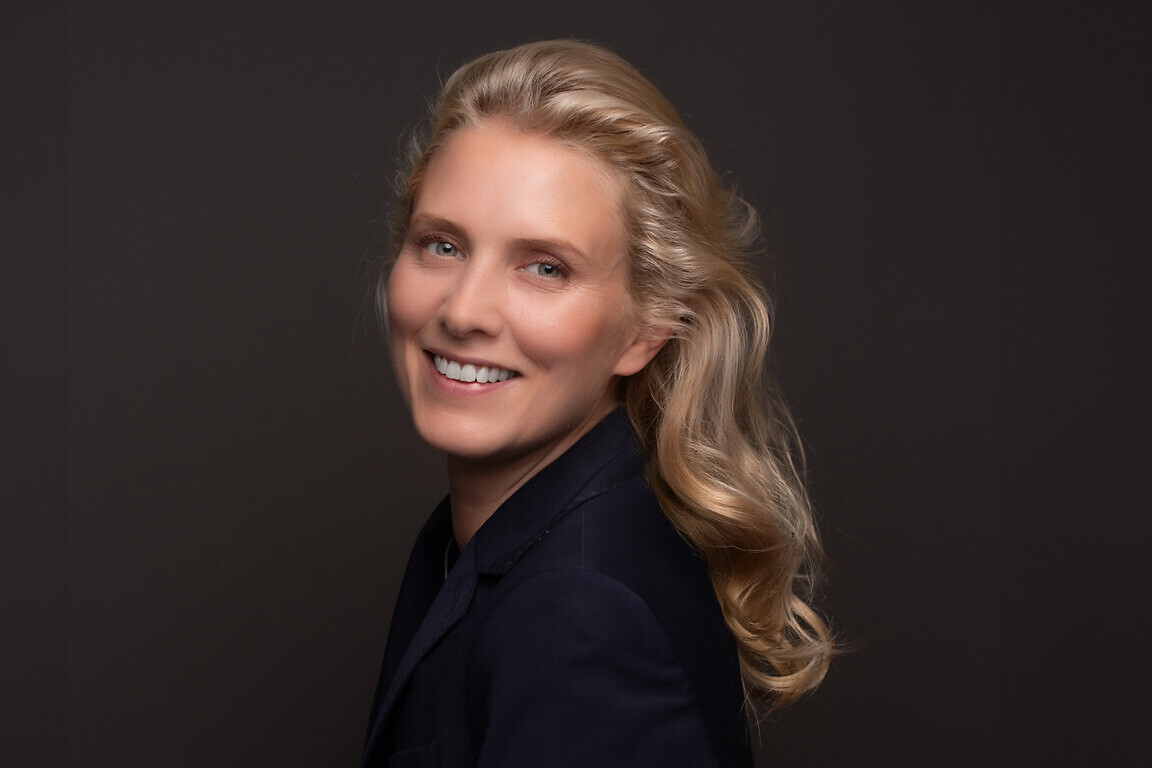The co-founder of Doctify talks about the value of patient feedback and why she wants both to empower patients and to give doctors a space to shine.
When orthopaedic surgeon Stephanie Eltz and Suman Saha founded Doctify in 2015, they wanted to tackle a familiar frustration: how little reliable information patients had when choosing a doctor. The idea was simple: a platform where people could read verified, meaningful reviews of clinicians, and where healthcare professionals could use that feedback to improve care. Doctify now operates in multiple countries and is part of a wider push to bring transparency and trust to healthcare through technology. Here, she talks to Healthcare Today about why she created the site and the value of feedback.
What was the gap that you and Suman saw in healthcare that convinced you that Doctify was needed?
The idea for Doctify came from a very personal experience. I had a mole that I feared might be cancerous. At the time, I was working as an orthopaedic registrar and found it surprisingly difficult to find a doctor who could see me on my one day off.
It struck me as absurd that, in a world where you can find a reliable restaurant or a taxi driver in seconds on your phone, accessing trustworthy information about healthcare professionals was so difficult. At the same time, I was surrounded by extraordinary doctors – dedicated people who work tirelessly to make the NHS function every day. I wanted to create something that helped patients find and connect with them, but also something that celebrated and supported doctors themselves.
Doctify was built on that dual purpose: to empower patients and to give doctors a space to shine. That’s how it began, nearly ten years ago.
About three years ago, we launched something new – a network that allows doctors to connect and communicate with one another. The idea was to create a global network of healthcare professionals, a bit like LinkedIn, but designed specifically for doctors.
That concept became even more meaningful to me after a deeply personal experience. My daughter was born prematurely and cared for in the neonatal intensive care unit at Chelsea and Westminster Hospital. During that time, doctors from different parts of Europe collaborated on her care – a specialist in Iceland examined her scans, communicating with colleagues in the Netherlands. They were among the leading experts in the world at interpreting scans of premature babies.
Although my daughter sadly died, that experience showed me the power of professional connection – an unofficial, international network of doctors who support each other in the most complex cases. It reinforced my belief that we should help build those connections more deliberately, bringing together people who may never have met but who are united by the same mission to solve the same problems.
“The behaviour of reviewers in this sector is very different from what you see in restaurants, travel or ride-sharing.”
Was it hard to persuade doctors to open themselves up to patient feedback?
Doctors are already exposed to reviews. There aren’t many other professions where an individual professional has their own public Google panel, open to comments from anyone who wishes to post one.
The problem is that if you don’t actively invite feedback from every patient, and instead just wait for reviews to appear, you’re only going to hear from the extremes. You’ll get the glowing reviews from grateful patients and the very negative ones from those who are angry or dissatisfied.
Doctify gives doctors the tools to change that. By encouraging every patient to provide feedback, doctors can build a far more balanced and representative picture of their work. The behaviour of reviewers in this sector is very different from what you see in restaurants, travel or ride-sharing – and that’s true across every healthcare platform.
That’s why Doctify’s focus isn’t just on ratings. We look at what doctors are reviewed for – their expertise, their communication, their care – because a simple score doesn’t give patients enough meaningful information. What matters is helping people understand the quality and character of the doctor behind the rating.

How do you ensure that reviews on Doctify are authentic and constructive, rather than simply promotional?
What is particularly valuable for patients is seeing what a doctor is actually reviewed for. Take this orthopaedic surgeon, for example – shoulder surgery is an incredibly complex area. [Eltz points to a review on screen] When you look at his reviews, you can immediately see his areas of expertise: he has 32 reviews for shoulder replacement, 71 for shoulder pain, rotator cuff injury and shoulder instability. It’s clear that this is a genuine shoulder specialist. If you have a shoulder problem, you know you’re in the hands of a true expert.
What’s also fascinating is that he has been endorsed by 34 other doctors for shoulder replacement surgery. For patients, this provides a powerful form of social proof – both the endorsements from fellow clinicians and the volume of positive feedback from patients with similar issues. That is far more meaningful than a simple overall rating.
“Negative reviews rarely relate to medical outcomes. They’re almost always about communication or the patient’s overall experience.”
How do you avoid bias or inequality in feedback – for example, reviews that might unfairly penalise clinicians serving more complex or disadvantaged patient groups?
What we tend to find is that negative reviews rarely relate to medical outcomes. They’re almost always about communication or the patient’s overall experience. Complaints are seldom about the fact that patients have to wait, because healthcare is inherently complex and often involves difficult circumstances. Rather, it’s about how they are made to wait.
If staff fail to keep patients informed, or if they appear indifferent or unempathetic, then the waiting experience can feel disrespectful, and that’s what tends to upset people. In the same way, reviews of doctors are not really about the clinical outcome; they’re about whether the doctor demonstrates expertise in their field, communicates clearly and makes the patient feel cared for.
How does Doctify balance the interests of patients and healthcare providers – two groups that don’t always see feedback in the same light? Can you be fair to clinicians and stay honest to patients?
Our approach is straightforward. In the rare cases where a review isn’t published, it’s because it breaches clear and standard terms and conditions – the same as you’d find on any healthcare review platform. That typically means the review is racist, defamatory or otherwise inappropriate.
When that happens, the decision isn’t made by us internally. It goes to an independent Clinical Governance Committee, which has no financial interest in Doctify. They review the case and make the final decision. Once they’ve reached a conclusion, one of our operations team members contacts the reviewer to explain that the committee decided not to publish the review and why.
We’re also introducing a transparency report to show exactly how many reviews were not published and for what reasons. The first of these reports will be released shortly, and we’ll publish one every twelve months thereafter. The number of reviews withheld is extremely small.
The committee itself is chaired by a group of consultants and includes a lawyer. They debate every case carefully and independently. We actually welcome negative reviews – they’re part of what makes the platform authentic. Interestingly, patients tend to trust doctors more when they see a few lower-rated reviews, especially if the doctor has taken the time to respond. It feels more real and helps build confidence.
“Trust, transparency and online reputation are universal concepts, but the weight they carry varies by market.”
Healthcare information is obviously sensitive. What’s your approach to privacy and data ethics?
We make a conscious effort to limit the amount of data we collect and to remove any sensitive information as soon as it’s no longer required. For example, once identifying details are no longer needed, we delete them, leaving only anonymised data such as first and last initials. Our approach is guided by the principle of data minimisation – holding only what is strictly necessary.
We also invest heavily in security, ensuring that our systems are as robust and secure as reasonably possible. But just as important as the technology itself is our commitment to keeping the amount of sensitive data we handle to an absolute minimum.
Since last year, you have been in several countries around the world. How does Doctify fit into healthcare systems where transparency and digital maturity vary so widely?
Different markets place emphasis on different aspects of what we do. For example, in Germany, doctors aren’t necessarily looking for more patients – they want fewer, but more of a particular kind. If a surgeon specialises in shoulder replacements, for instance, being able to demonstrate that expertise online helps attract patients who are specifically seeking that kind of care.
Trust, transparency and online reputation are universal concepts, but the weight they carry varies by market. The network aspect of Doctify – connecting doctors and clinics – is particularly relevant in places like the UK, the Middle East and Australia, and even Austria to some extent. Germany, on the other hand, is more challenging when it comes to building a social, networked community among doctors.
Looking ahead, we’re planning to expand further in the Middle East and continue to globalise the platform. The goal isn’t necessarily to have a major physical presence in every region, but to make it simple for doctors anywhere in the world to join the platform and connect with patients.



